Serves 1-2
Level of difficulty: 2.25
Selecting your steaks:
Beef strip loin steaks go by many nicknames, including New York, Kansas City, Entrecote (a misnomer), and others. The shape of the steak is distinctive enough that the confusing assortment of names is not usually a problem. In generic terms, this primal cut extends from about half way down the spine of the animal and ends just before the rump/leg area.
These cuts are frequently available whole in some “big box” stores, and with a little trimming can offer some savings to the customer. Pictured whole, the visible end below is the section closest to the hip, and is generally considered less desirable because of the presence of more gristle.
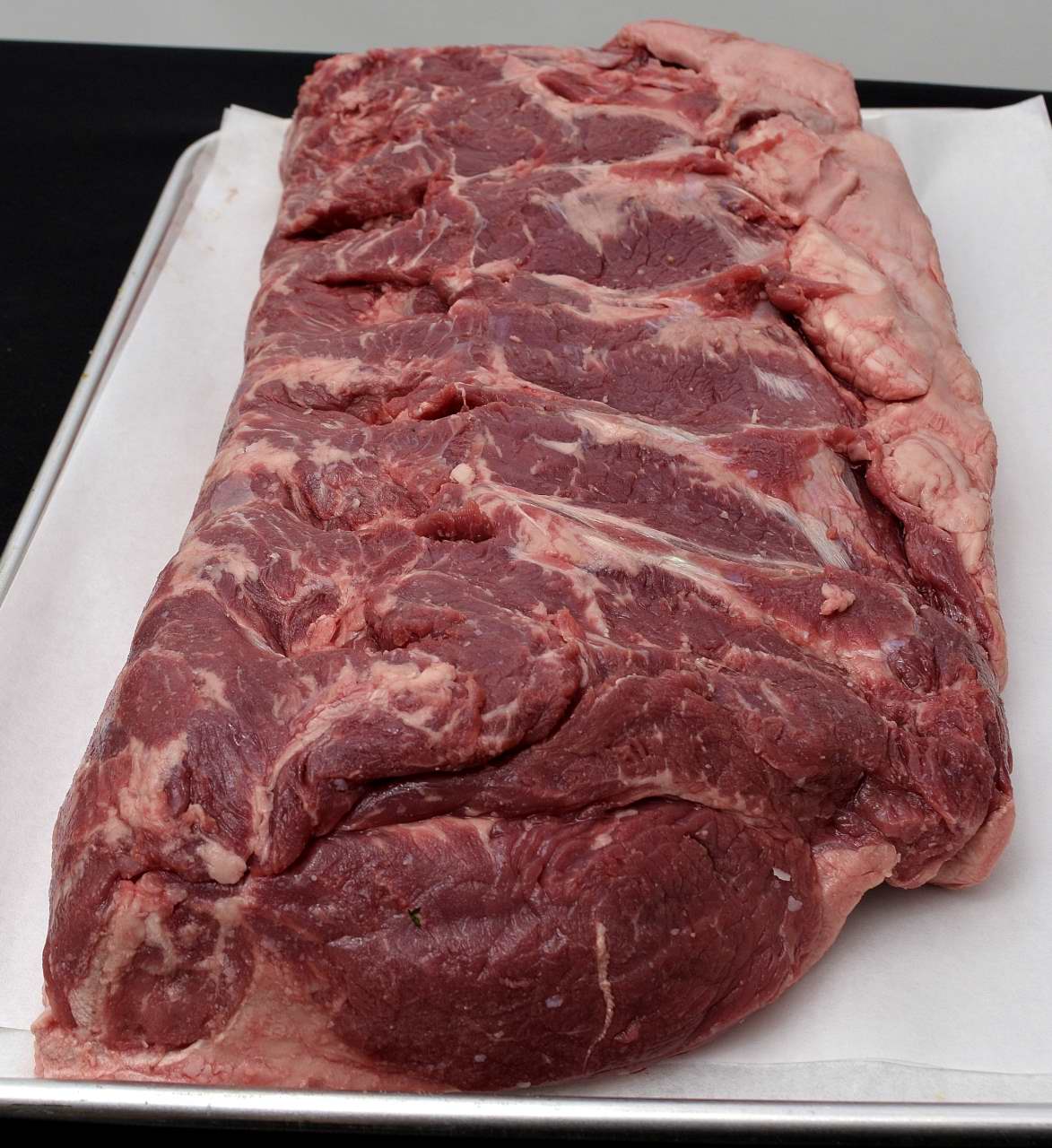
Pictured below from the other end, you can see that the visible face resembles a rib eye steak, and not without reason. This spot is where the rib eye muscle “becomes” the strip loin muscle. This end is the tenderest because the animal exerts so little force on its location in the middle of the spine.
 In the butcher’s case, you usually see this steak represented in two basic forms:
In the butcher’s case, you usually see this steak represented in two basic forms:
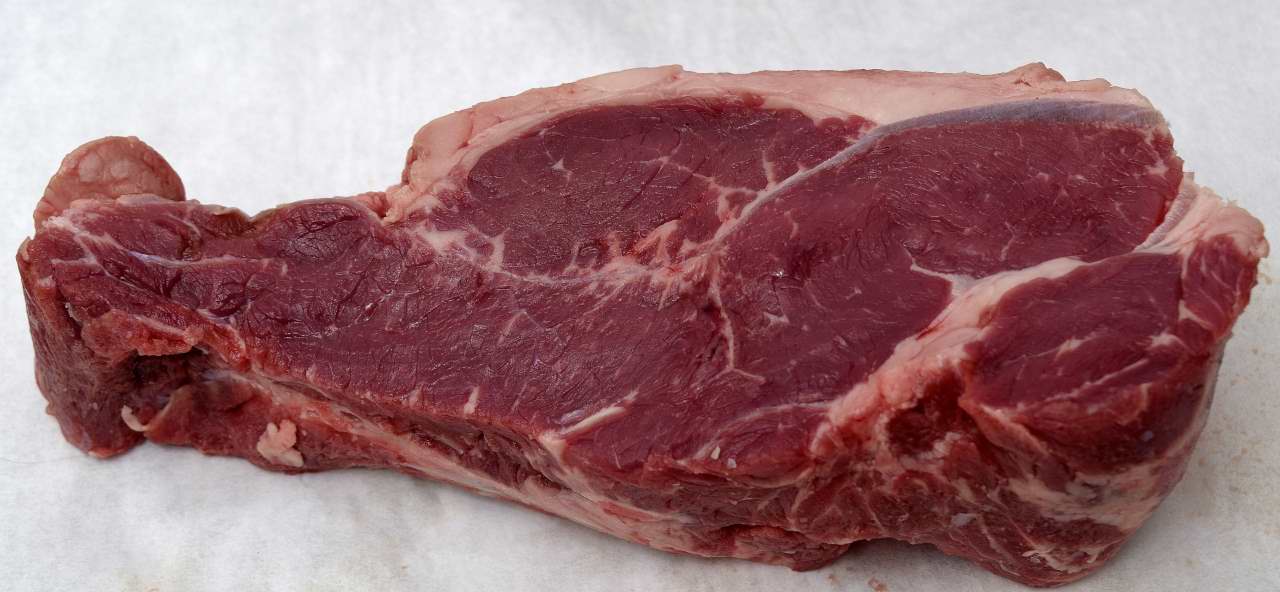
Above, this steak is cut from the hip end, which comprises approximately one third of the primal cut. You can see the semi circular strip of nerve/gristle cutting a swath in the middle of the steak. Although this cut comprises half of the very popular bone-in Porterhouse steak, this section can be quite tough. Whereas…
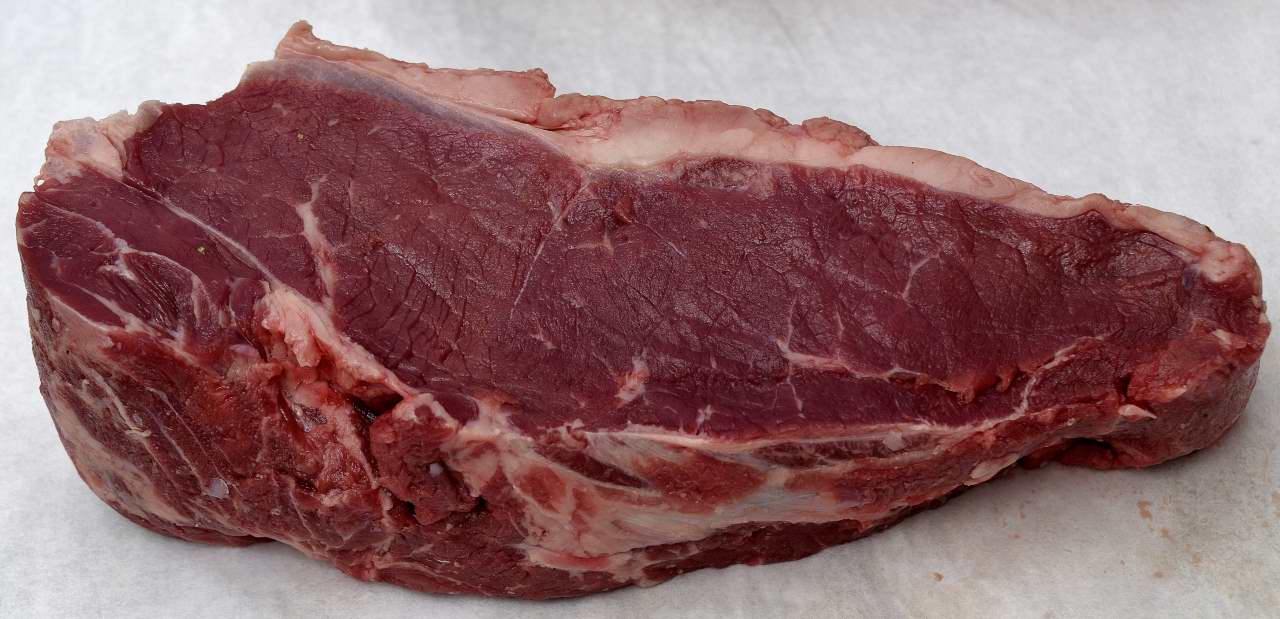
This steak is cut from just above where that circular vein/nerve occurs, so this would be the “center cut” of the strip loin. The shape is not round or oval, but more that of a long triangle. This is the preferred cut!
Procedure:
Stage the steak(s) in single layers into dedicated vacuum bags. If you want to use self sealing plastic bags, remove the air from the bag using the water displacement method.
How do you like your steak?
The appearance of doneness can be increased (but not reversed) after the sous vide processing step by extending the duration of the searing stage explained below. There is debate as to the exact definition of “rare,” “medium rare,” “à point,” etc. A little practice will help you learn just exactly what temperature achieves your preferred appearance of doneness.
Here are some basic temperature setting guidelines:
Rare: 129 F/54 C.
Medium rare: 135 F/57 C
Medium: 140 F/60 C.
Medium well: 145 F/63 C.
Well done: 150 F/66 C.
Preheat the water in your sous vide bath to the temperature that most closely matches your preference. Process the steaks for a minimum of 2 hours. If you want your steak fully pasteurized, allow 4 hours. If you want to process more than one steak at different degrees of doneness, click HERE.
For enthusiasts who like their steaks extremely rare, steaks can be processed at temperatures as low as 122F /50 C; HOWEVER, in this case the steaks will not achieve pasteurization, so the processing time MUST be limited to TWO HOURS in order to meet USDA standards of food safety. The steaks should then be consumed immediately, just as one would if sous vide were not being utilized.
Let sous vide timing work for you!
The rate of collagen conversion in the sous vide range of temperatures is very gradual. The difference in texture and appearance between a steak processed for 2 hours and a steak processed for 8 hours is negligible, if detectable at all. Some people want to start their steaks when they get home from work, so the 2+ hour interval is convenient for them. Others would rather get started in the morning before they leave for work so that the steaks are ready for finishing when they get home. Both approaches are favorable!
Finishing:
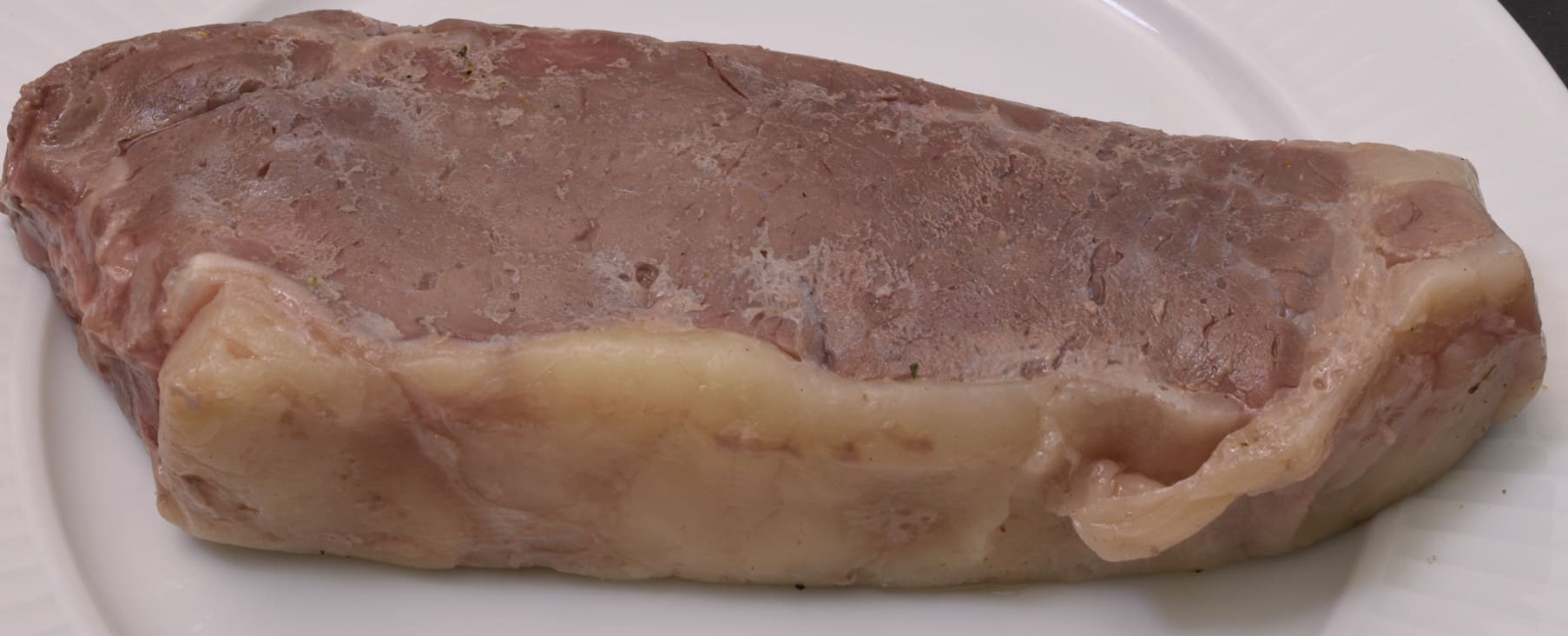
Remove the steak(s) from the bag and pat dry.
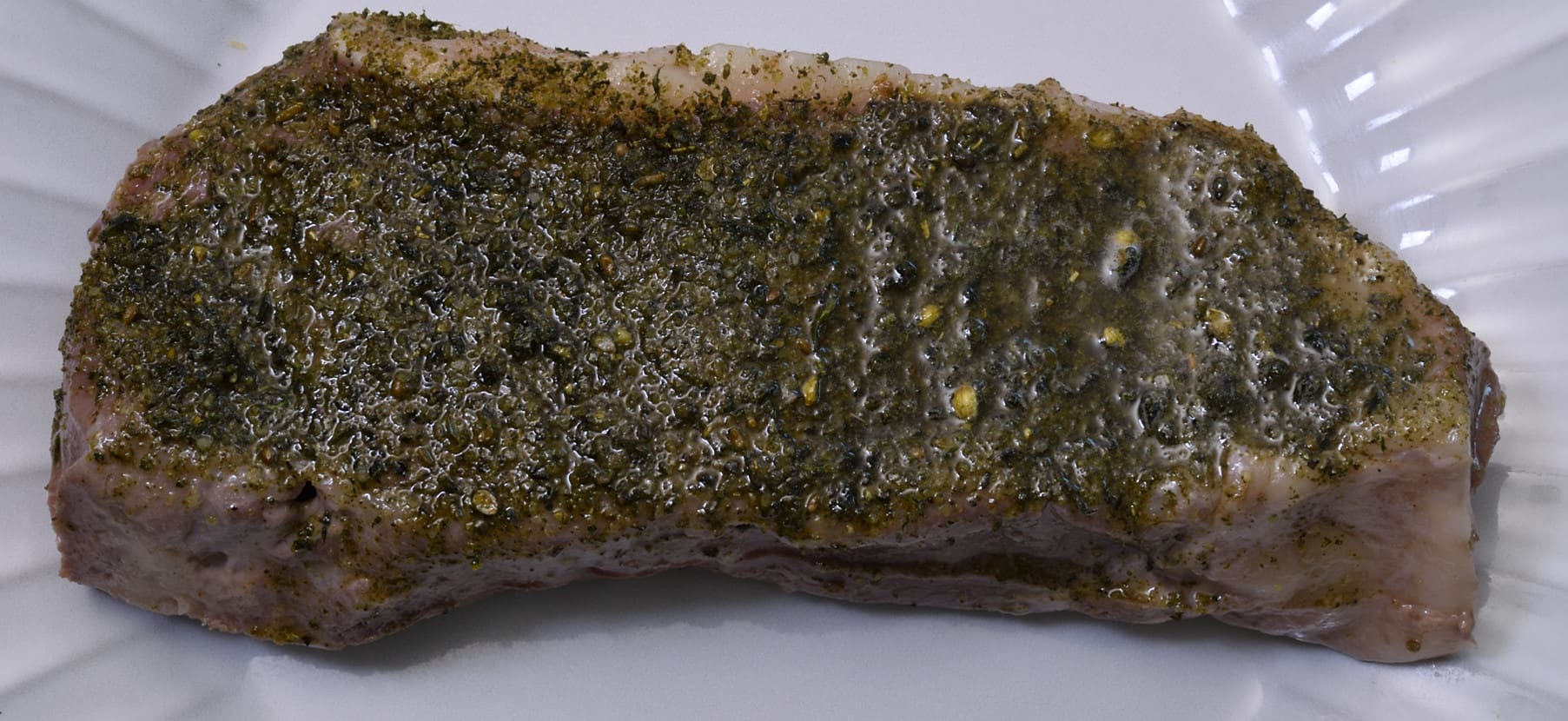
Season the steaks as desired–simply with salt and pepper or employing any of the recipes listed HERE, and spray or spread a few drops of vegetable oil on them. Preheat the skillet to a surface temperature of approximately 300 F+/150 C. The pan should not quite smoke. Lay the steak (one at a time if you are doing two) in the pan and sear until the desired color is achieved. Avoid moving or excessively flipping the steak–this cools the pan.
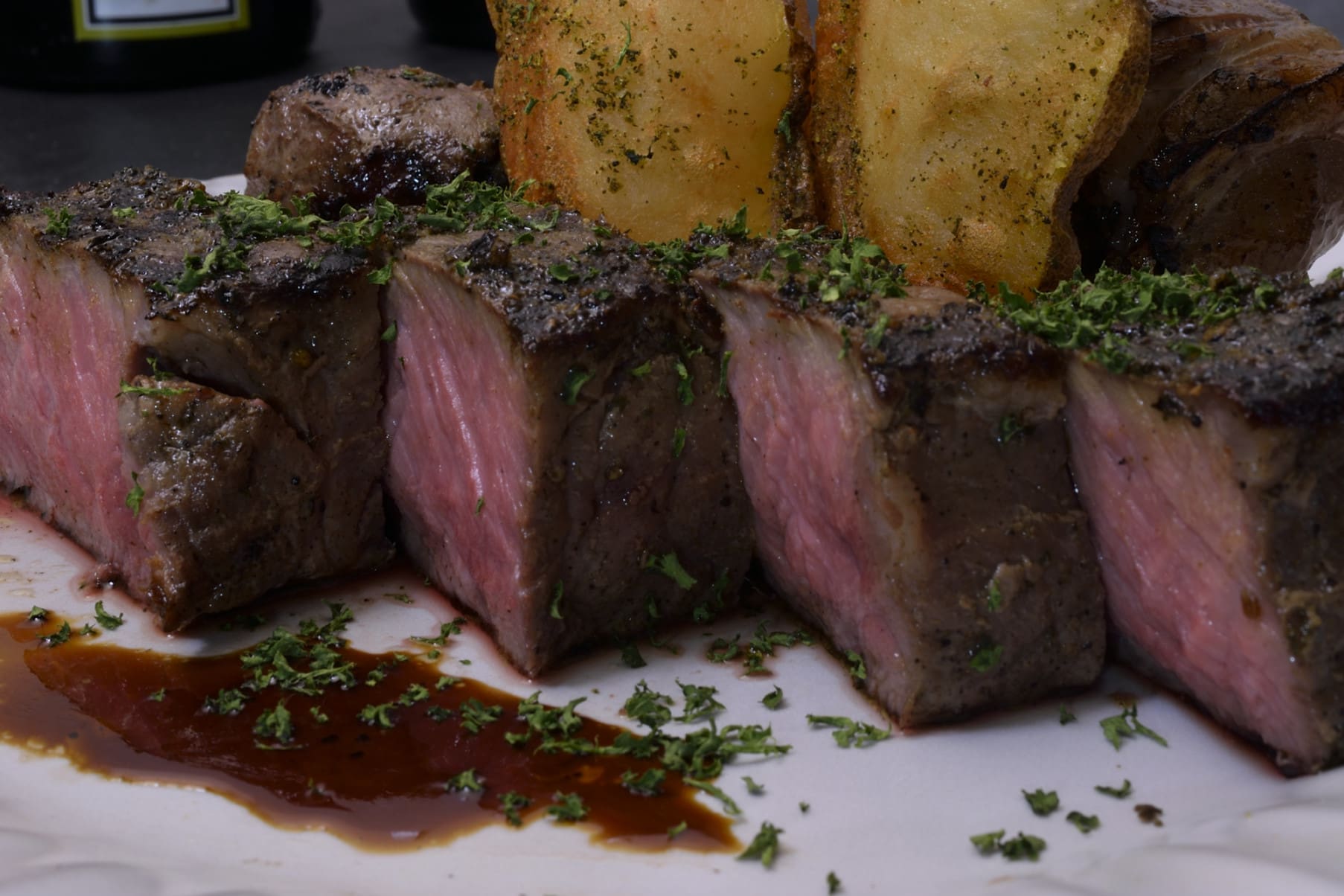
This process usually takes about one to two minutes per side. Remove from heat and add the butter to coat the steak, allow to rest for two minutes. Serve as is or present as desired:
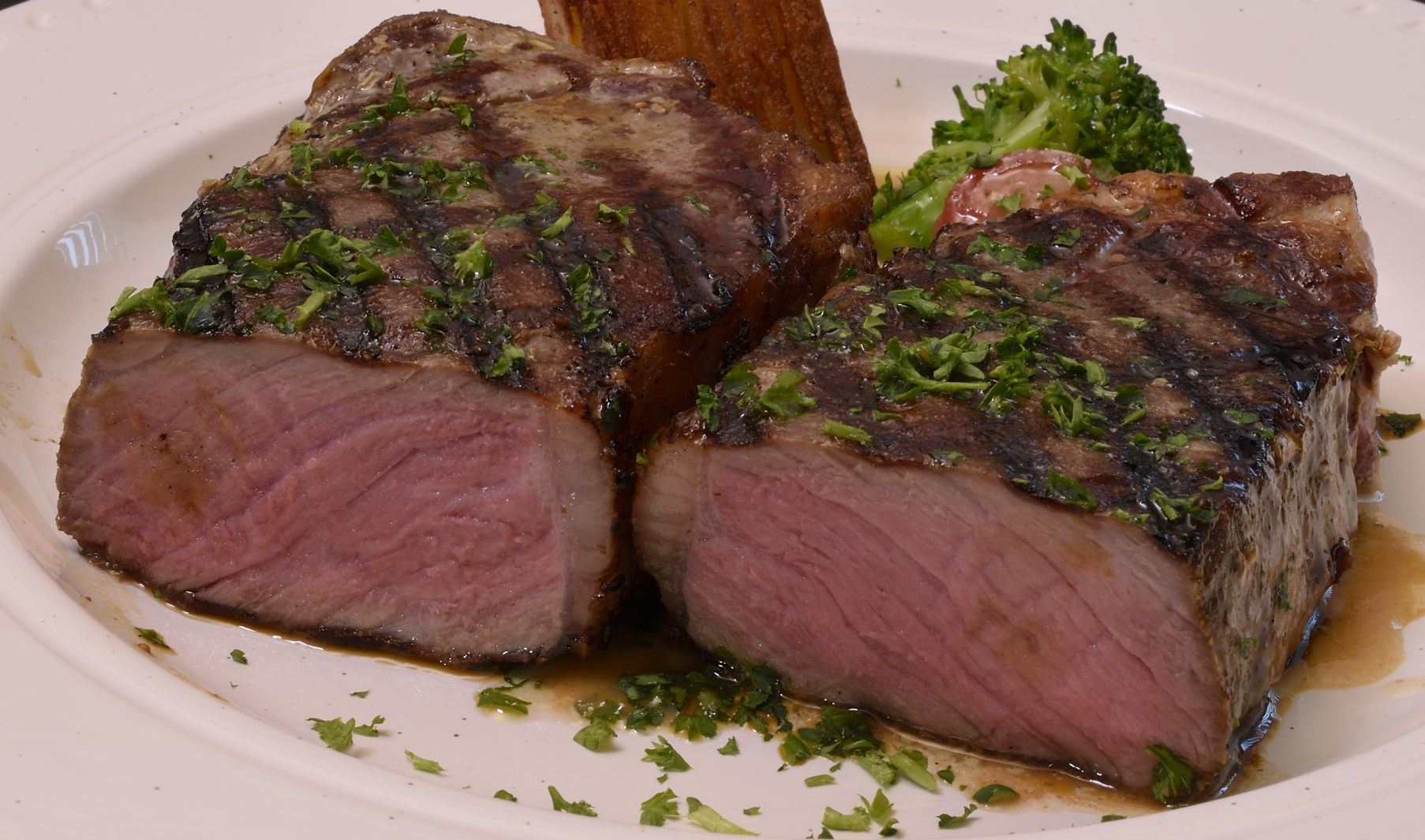
Note:
Just as I explained what is the desired shape of a strip loin, as depicted below…

At service, if the steak is served whole it should be presented just like this–cooked of course, but with the point of the triangle aimed to the right, “4 o’clock” position, and the long strip of edible gristle away from the diner.
On the left end, you can see a distinct nugget of meat that is alternately called the head or the tail, depending on chefs’ viewpoints. This is a very very tender and unctuous piece of meat, connected to the tenderest part of the larger muscle.
MOST people take their fork in their left hand and their knife in the right hand to cut their steak (apologies to lefties). Logically, they take their first “stab” at approximately the “7 o’clock” position, which will lead them to this favorable first impression.
Norm King
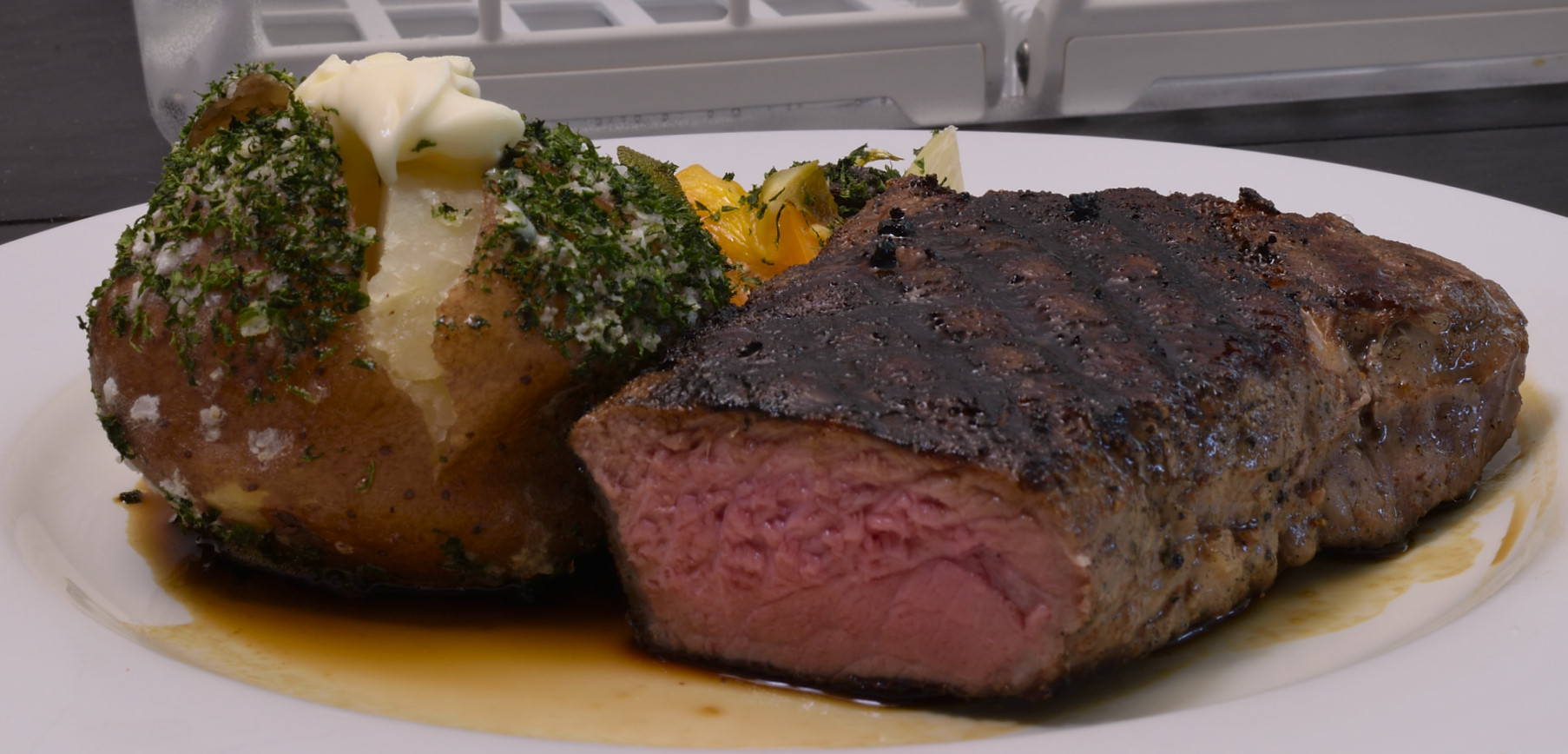
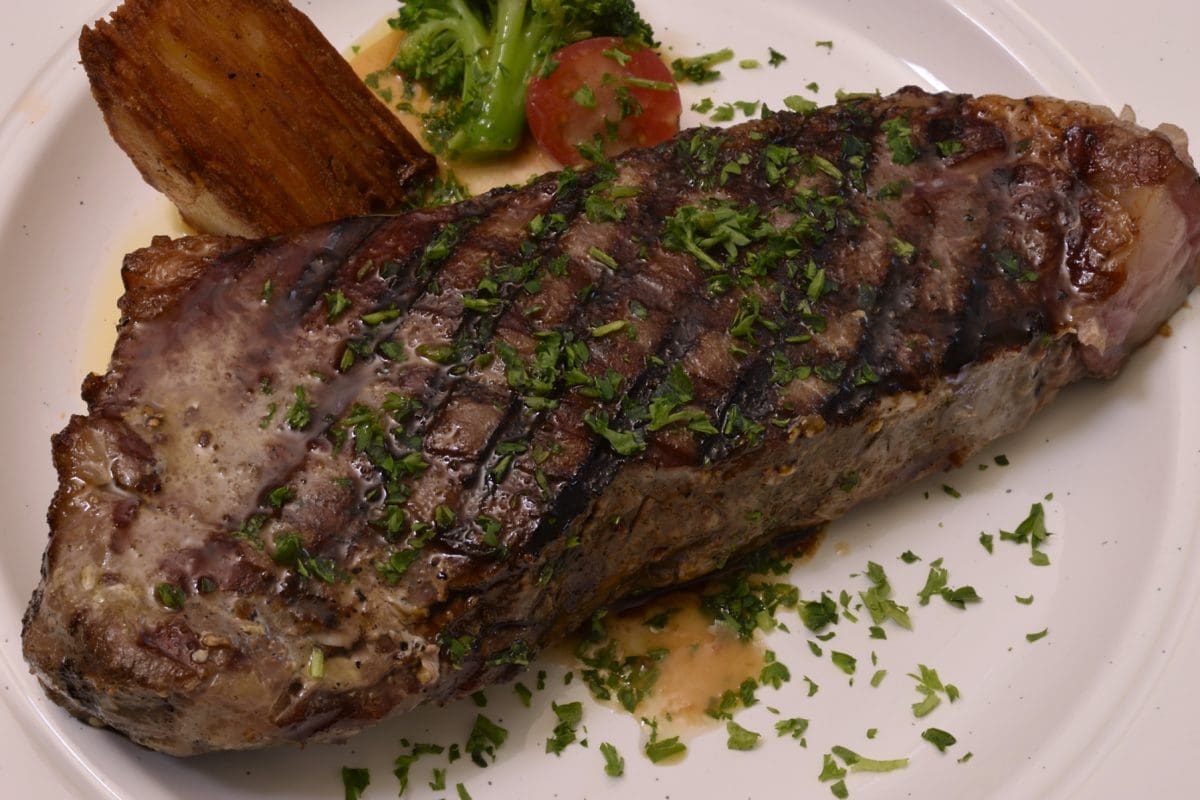
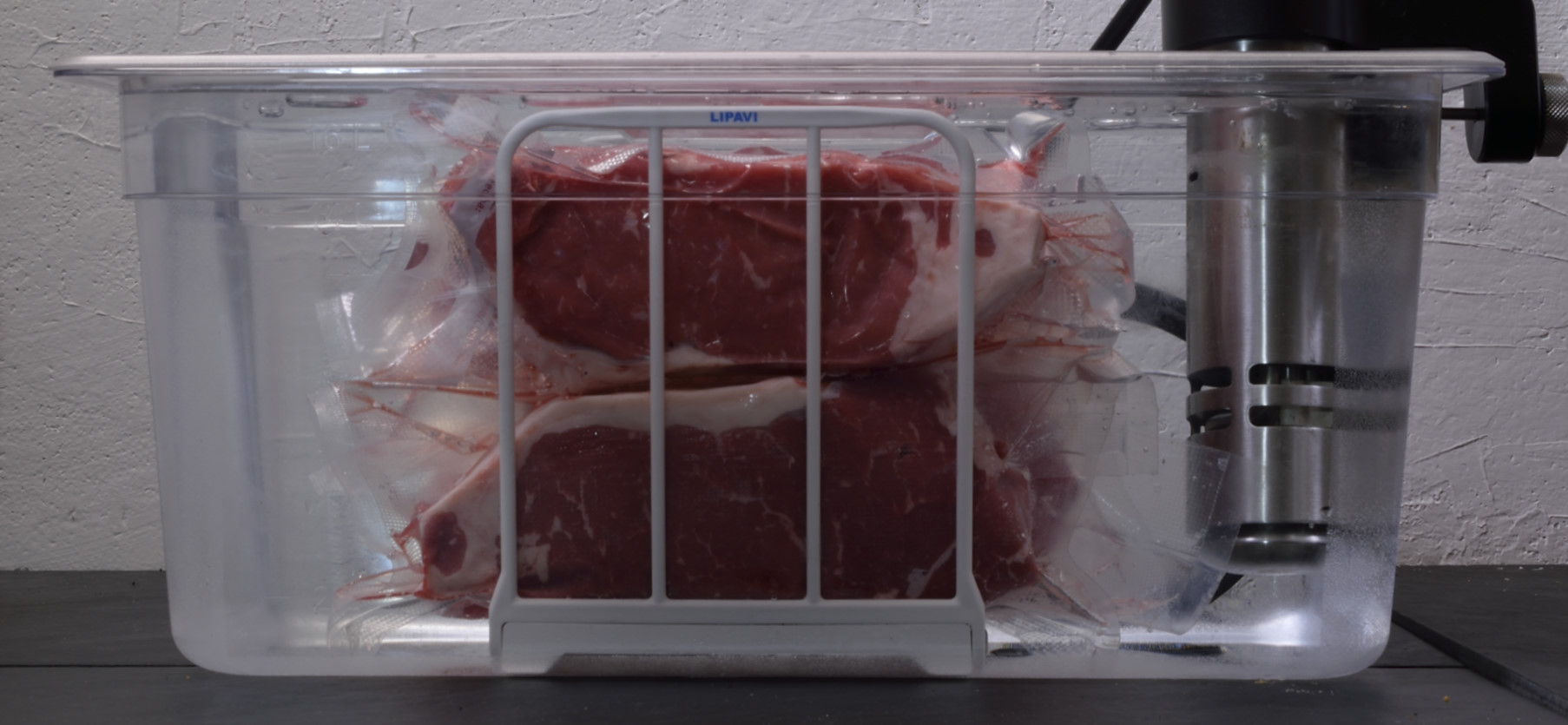
I thinmk this iis one of the most significant info for me.
And i’m glad reading your article. But want to remark on few general things, The
site style is wonderful, the articles is really excellent : D.
Good job, cheers
My page: Dieter
This website truly has all the information I needed about this subject and didn’t know who to ask.
Look into my homepage – vpn special code
Hello! This is kind of off topic but I need some
guidance from an established blog. Is it very difficult to
set up your own blog? I’m not very techincal but I can figure things out pretty fast.
I’m thinking about making my own but I’m not sure where to start.
Do you have any ideas or suggestions? Many thanks
Stop by my web-site: vpn coupon code 2024
PBN sites
We build a system of private blog network sites!
Pros of our privately-owned blog network:
We execute everything so Google doesn’t comprehend that this is A self-owned blog network!!!
1- We acquire domain names from separate registrars
2- The primary site is hosted on a VPS hosting (Virtual Private Server is rapid hosting)
3- Other sites are on separate hostings
4- We assign a distinct Google ID to each site with verification in Google Search Console.
5- We create websites on WP, we don’t utilize plugins with the help of which Trojans penetrate and through which pages on your websites are established.
6- We don’t repeat templates and utilize only individual text and pictures
We do not work with website design; the client, if wished, can then edit the websites to suit his wishes
Heya are using WordPress for your site platform? I’m new facebook vs eharmony to find love online the blog world but I’m trying to get started and set up my own. Do you require any html coding expertise to make your own blog?
Any help would be greatly appreciated!